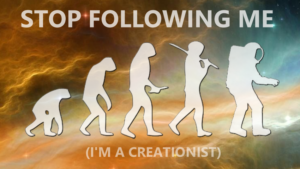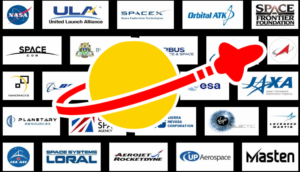Contents
This can spell disaster for a new project when a large share of the effort should be spent getting the word out to potential customers, influencers and journalists. These are the guys who are happy to do lots of the heavy lifting for you – helping generate the snowball effect that brings your new offering into contact with those likely to buy from you.
Obviously high-priced space services and hardware purchases are made by those least likely to have their decisions swayed by being exposed to marketing materials and advertising copy the come into contact with online. It is true also that when promoting lower priced products such as engineering or business services, conference tickets, and even books and merchandise, marketers have a harder time selling to specific industries, such as the space sector, than they do to consumer markets.
Even some digital methods of getting your brochure viewed or your salesman’s foot in the door suffer in specialist sectors. God knows how much spam I have to wade through in space industry client catch-all email inboxes, in order to block these unsolicited emails. And how many of these spammy engineering service marketers or product manufacturer sales staff gain my trust and generate the response they hoped for? None.
 I am sure you agree, any brand that relies on spamming their potential customer’s inboxes with scraped or incorrectly guessed email addresses achieve nothing but damage their own brand by advertising themselves as being desperate to by-pass their usual methods of cold-calling to blast us with their generic predictable sales banter.
I am sure you agree, any brand that relies on spamming their potential customer’s inboxes with scraped or incorrectly guessed email addresses achieve nothing but damage their own brand by advertising themselves as being desperate to by-pass their usual methods of cold-calling to blast us with their generic predictable sales banter.
Fact is, when the space industry needs something, they go out and get it, either from personal contacts or by asking around colleagues for firms they can recommend.
When that doesn’t work, many turn to Google and others find themselves recalling the brands they know offer the required services – often because they have been exposed, and influenced by, advertising and marketing materials or even promotional gifts they have come into contact with in the past.
Regardless if it is a space industry service, a conference, a product or book or indeed high-priced space-faring hardware – ensuring your target market is exposed to your offering is essential in generating initial and then ongoing interest. And because it takes more than (on average) seven touches with a brand before a solution can become a viable option in our minds, the more coverage and interactions we have with a brand the better.
For those smaller or new space organizations that don’t enjoy help from the mass media or the space industry news services breathing down our necks, it is essential to go out there and advertise, market and promote new offerings to those who matter the most – potential customers.
Who in the space sector uses advertising?
Remember the space industry isn’t just populated with the big space brands we are all aware of. There are countless businesses, not-for-profit organizations, educational charities, online communities and individuals after a piece of the publicity pie – all likely to gain traction from successful advertising campaigns.
From keeping a tally during a study of space marketing materials I was exposed to over the last 12 months, I noted that those who advertise their wares include:
 Big space firms that require publicity (not sales) for their b2b brand or programs
Big space firms that require publicity (not sales) for their b2b brand or programs- Big engineering firms that only require bespoke contracts from big space firms
- Big consumer brands intent on cashing in on the “coolness” of space exploration
- Big movie franchises interested in whipping up excitement for their latest release
- Space sector engineering or manufacturing firms that require increased business
- Space advocacy organizations lobbying for the public’s interest and their support
- Space charities seeking support from large brands and donations from the public
- Space news and events organizations generating increased reach and subscribers
 Space and astronomy consumer brands selling magazine subscriptions to the public
Space and astronomy consumer brands selling magazine subscriptions to the public- Space and astronomy telescopes, models and apparel producers selling to the public
- Space and astronomy website and forum owners hoping to increase online reach
- Space enthusiasts intent on attracting awareness or sales for their product or book
Today in the digital age, advertising opportunities are always increasing. Gone are the days when ad spend is thrown blindly to the wind without any means of gauging its effect. Maximum monthly budgets can now be set and all clicks or phone calls generated can be recorded, so that your advertising spend can be analysed and mapped to the sales lead conversions they generate.
Because today one can better estimate the ROI generated from advertising, having access to the data that tells you which channels, ads, publishers and keywords generated the most enquiries and sales, allows advertisers to better keep wasted advertising spend to a minimum. Now, you really can know which half of your ad budget is wasted.
First though, let us remind ourselves that…
Traditional ad channels don’t work in space!

Television advertising
– Forget it, not even high-profile organizations such as NASA or SpaceX are going to benefit from TV advertising. Apart from branded apparel, they don’t sell consumer products and although there is public interest in their space programs – the income generated from those who visit their sites is close to zero. That’s right, most of those NASA t-shirts you see people wearing, came from Walmart. Well done NASA and thanks China.
Radio advertising
– Again, even small local radio stations or online space shows are not likely to help your firm sell any space related products or services, though ads for space events have been used by organizations hoping to generate interest from potential conferences, seminars and even workshops in the space sector.
Product Placement
 – Unless you are selling Star Trek merch or other consumer products you can forget lots of the usual methods of sneaking your brand into popular broadcast productions and films. Again these methods only work for mass-consumer products and even then it is difficult to gauge the effects the subliminal branding has with regards to growing your consumer base.
– Unless you are selling Star Trek merch or other consumer products you can forget lots of the usual methods of sneaking your brand into popular broadcast productions and films. Again these methods only work for mass-consumer products and even then it is difficult to gauge the effects the subliminal branding has with regards to growing your consumer base.
Direct Mail
– No chance. Even if you went out of your way to collect together all the postal addresses of buyers in the space industry, sending them a nice covering letter and brochure just won’t be worth the effort. Many engineering firms have tried and failed when it comes to ensuring their catalogue is placed on desks and staff-rooms of space firms.
Branded Signage
 – Once more, unless you are Star Trek, Star Wars or some other global franchise marketing to well, everyone in the world, then no amount of signs are going to influence those in the space industry or even those with an interest in astronomy to subscribe to your wares. Just won’t happen – save your money.
– Once more, unless you are Star Trek, Star Wars or some other global franchise marketing to well, everyone in the world, then no amount of signs are going to influence those in the space industry or even those with an interest in astronomy to subscribe to your wares. Just won’t happen – save your money.
Industry Directories
– Nobody really uses these anymore because online directories do the job better and save lots of time and trees. However some of the ads seen in online directories can work a treat, as we will see later.
Print advertising
– ie brochures, leaflets, flyers, handouts and point of sale advertising methods just don’t apply to the space industry – unless that is, you are handing them out at space industry events and conferences and actively engaging with those who influence buyers for space sector brands that are potential future customers.
So, none of that works and never will in a sector that pretty much already knows just what it wants. Below though are a number of methods that still get a look-in with regards to acquiring a share of the space industry’s marketing and advertising budget.
Real-world advertising that still works
 “Advertising is based on one thing: happiness. And do you know what happiness is? Happiness is the smell of a new car. It’s freedom from fear. It’s a billboard on the side of a road that screams with reassurance that whatever you’re doing is OK. You are OK.” Don Draper – MadMen.
“Advertising is based on one thing: happiness. And do you know what happiness is? Happiness is the smell of a new car. It’s freedom from fear. It’s a billboard on the side of a road that screams with reassurance that whatever you’re doing is OK. You are OK.” Don Draper – MadMen.
Before the digital revolution got a foothold, marketers had to rely on advertising methods that were, to say the least, difficult to measure. As John Wanamaker pointed out – half (or more) of your advertising budget is likely to be wasted – but you won’t ever find out which half.
This is one of the problems with using real-world advertising as opposed to track-able digital marketing, however, for those firms whom need to generate ongoing brand exposure and keep their organization in the eyes of the media, the below are now the most popular, and most effective, real-world advertising channels exploited by space brands around the world.
Space magazine ads
As traditional form of advertising, weekly and monthly magazine ads allow space and astronomy brands target specific groups of potential customers. Attaching an incentive, such as a discount coupon, to the ad can help track the ad’s effectiveness. Purchasing an ad in a section relevant to your business – for example, an ad for a new book or space related consumer product can also help you to reach target markets, but generally once you have an ad in say, Astronomy Now magazine, you can be sure some potential customers will see it. Even if they don’t take action and order anything.
Event sponsorship
 Advertising your product or service through event sponsorship can take many forms. You might receive an acknowledgement in the event program, have an on-site location where you can give out sample product, or your company logo might appear on the event posters and on the stage.
Advertising your product or service through event sponsorship can take many forms. You might receive an acknowledgement in the event program, have an on-site location where you can give out sample product, or your company logo might appear on the event posters and on the stage.
Reinforcing this advertising coverage by giving a talk about your brand’s products and inviting the audience to pop round to your stand to learn more is an effective way to attract decision makers to your offering. Indeed, this is one of the best ways for new brands to get their message out to the right people and convince influencers that their new solution is a viable one.
Publicity events
Sir Richard Branson and others know the benefits of the free advertising gained by holding publicity events and using news conferences to announce new products on offer. Indeed, generating press coverage for ongoing projects that have not yet come to fruition can be an essential way to keep the space industry and news community’s eyes pointing in the right direction.
Branson has said many times how much money he saves on advertising by generating free publicity – by dressing up, showing off or taking silly risks he knows the media, and the space industry, will be watching. Sure, most CEO’s don’t have the gall or public profile required to pull this off, but Branson made sure he was a household name before cashing in on the business opportunities that comes with celebrity. Clever.
Public speaking
 If the product you sell relates to your own expertise, public speaking can be a great advertisement. Often exploited by chiefs of industry or large space firm’s CEO’s, the trick used here is to provide the benefit of your experience without selling your brand.
If the product you sell relates to your own expertise, public speaking can be a great advertisement. Often exploited by chiefs of industry or large space firm’s CEO’s, the trick used here is to provide the benefit of your experience without selling your brand.
Appearing as experts on tv shows, in newspaper columns, or even attending press conferences and government committees, has multiple benefits. Sure other chiefs get an idea of how you think, how your firm likely works with others but most of all, they can get a good impression on how resourceful your chief or your brand has become. A great way to build trust with potential clients and partners, even if it isn’t advertising as such.
Conference giveaways
We have all been there and many of us have managed to amass branded pens, key rings, computer memory sticks, stickers, patches and the best one of all…. free t-shirts advertising (yes advertising) our favorite space brands. Who could say no to a free SpaceX hat or hoodie? Ok, not all of us wear hoodies or baseball caps but those who do seem to be very keen to wear branded clothing as a statement about their tribe.
How to get countless people #advertising your #space #brand for free? Giveaway #T-shirts Click To TweetSpace firms exploit this symbiotic arrangement with enthusiasm – and so they should. How else could you get countless people advertising your brand for free, and where better to enjoy that free publicity than at a conference where many a photographer and journalist are busy recording and commenting on events. Space industry clients of mine, are regularly pestered via email by fans of the brand, requesting free t-shirts, flags or branded materials – and why not? Are free Blue Origin or Virgin Galactic tattoos to be the next trend seen at space industry workshops, seminars or conferences? Let’s wait and see.
Online digital advertising that works
 Ok, so not all of us are ready to be branded on the arm by Branson, but posting ads on websites that receive heavy traffic from the space industry sure is one of the newer ways to get word out about your space business – or indeed, just to keep your brand on people’s minds.
Ok, so not all of us are ready to be branded on the arm by Branson, but posting ads on websites that receive heavy traffic from the space industry sure is one of the newer ways to get word out about your space business – or indeed, just to keep your brand on people’s minds.
Many space news sites go out of their way to encourage space firms to pay a monthly fee to advertise on their websites – regardless of the volume of traffic it pulls to your site.
Social networking sites such as Facebook, Twitter and the rest all have advertising programs that allow advertisers to target a particular demographics and only pay for the traffic that completes a pre-defined goal – such as newsletter sign up. These ads can be configured to only display to owners of online profiles that meet the specifications of your product’s target market. However the best opportunities for online advertising that allows advertisers to assign a maximum budget, decide which sites to show your ads on AND target particular demographics is Google’s Adwords program. Lets look now at our online digital advertising options for our space sector brands and products.
Bespoke website advertising
We have all seen countless banner ads above and around articles published on websites such as Space News, Space Daily, SpaceRef and the rest. Indeed these ads serve us well to remind the industry of upcoming events and new products on offer. However, how cost-effective these ads are depends greatly not only on the readership (who are able to make or influence purchase decisions) but also on the products being advertised.
In a recent space industry advertising study, the biggest share of the ads were for conferences or events. However most of the ads were missing opportunities to get better results – usually because the badly designed ads didn’t even mention what was on offer (seriously! this is usually due to the ads being created in-house rather than have an advertising expert spec out what the campaign is intended to achieve). Other ads did a great job of pulling the right type of potential customer to the relevant landing page or website homepage.
Getting started with bespoke advertising is easy, you just contact any of the space news websites and ask for a price list. Then create your ads and use your Google Analytics (or other traffic analysis software) to get an idea of how many referral traffic visits and conversions the ad campaign generated. Don’t hold your breath though. When paying an average of $400 for a months worth of coverage, don’t expect to break even or going into profit with more than $400 worth of sales, unless your product (or conference ticket) price is quite high. This type of advertising is best seen as a way to increase visibility, rather than generate website traffic or actual sales. To do that, you will need to make a pact with the devil and sign up to Google Adwords…
Google display advertising
 To enjoy greater exposure using Google Adwords or other pay per click platforms you are able to set your daily or monthly budget and have your ads displayed on popular space industry websites such as SpaceRef.com, SpaceNews.com, Space.com and many, many others. See some of the most prominent space news sites here.
To enjoy greater exposure using Google Adwords or other pay per click platforms you are able to set your daily or monthly budget and have your ads displayed on popular space industry websites such as SpaceRef.com, SpaceNews.com, Space.com and many, many others. See some of the most prominent space news sites here.
Display advertising usually refers to showing responsive (resizes depending on the device being used) image ads to visitors to the host site. Without having to make specific agreements or deals with the advertising manager of the host sites Yep, Google does all the work of placing your ads for you.
Better still is that Adwords even helps you create graphic image and text ads by pulling images and colors used in your landing page into your ads, so you don’t need to design them. However you do need to decide the text used in the ad and define the landing page you want to send traffic to, so there is some creative input still involved. Actually this is a good thing because making a handful of ads with subtle variations, allows you to “split test” which images and wording work best to pull the most potential customers to your site’s landing page.
 The fact that you don’t need to own Photoshop or have design skills is great news if you know what message you want to put out but don’t have a graphics guy to create a set of different sized images that nicely represents your branding and products.
The fact that you don’t need to own Photoshop or have design skills is great news if you know what message you want to put out but don’t have a graphics guy to create a set of different sized images that nicely represents your branding and products.
Setting Google display ads up can be done in just a few hours if your digital marketing strategist knows what they are doing and you have total control of your daily and monthly spend.
The best thing about exploiting pay per click advertising is that you never pay a single penny for people to see your ads – even if they appear every day on the top space sites! Really! Pay per click advertising ensures you only pay when someone actually clicks on your ad. This ensures a huge amount of free exposure for no cost. And your ads are up there alongside competitor ads that paid the host sites hundreds of dollars for the same ad placements. If only they knew what they were missing.
Google search advertising
For those who want to attract potential new customers to their site when searching Google for a related search term, Google Adwords Search Network advertising is the best option. By selecting which search queries should trigger your ads, you can jump above all those websites listed in the search engine results pages, simply by paying Google. I told you it was similar to making a pact with the devil.
That’s right, by bidding on your target keywords, for example “Space Conference” you can join other punters such as spacetechexpo.com at the top of Google search results with you text based ads. Again, Google gives you full control of your advertising spend by allowing advertisers to choose the maximum they want to pay for each click to the site and also by setting a maximum daily budget.
Again, one of the best things about search ads is that your ad sits above all the other organic search results for free and you only pay when someone clicks. Another benefit is you get to split test the wording of your ads to generate better click through rates and your can even make your ads bigger than your competitors ads by adding your address, phone number, reviews, sitelinks and other details that give visitors more information about your offering.
One drawback of search ads is that the paid search results, and the ads within them, only show if there are enough monthly searches for that term. Many space industry related search queries do show paid results but some specific keywords such as “cubesat kits” only show when lots of people are searching for that phrases. But what the hell – because you only pay when people click your ads, why not have a bunch of campaigns set up and enjoy all that free exposure in the exact place people go to find out about your product, service or event, namely Google.
Google remarketing
 Ever noticed how certain ads seem to follow you around the web? Well that is exactly what is happening. By attaching a cookie to the computers of those people who visit a particular website (this one for instance), Google Adwords is able to display a set of ads on countless unrelated sites that you visit around the web.
Ever noticed how certain ads seem to follow you around the web? Well that is exactly what is happening. By attaching a cookie to the computers of those people who visit a particular website (this one for instance), Google Adwords is able to display a set of ads on countless unrelated sites that you visit around the web.
This method of “Remarketing” is a cost effective way to get your advert back in front of those who have previously visited your website. Indeed, because you know that they visited your, say space conference site, but didn’t buy a ticket, you can finely tune the advertisement’s message to say something like “Still thinking of coming to the Space Expo? Get 10% off your ticket price – click here”. Cheeky huh? It works really well to generates subsequent sales with little extra effort.
Not only are you following potential customers around the web, but you are refining your message to display benefits and calls to action that are most likely to help them convert into a customer. The number of ways to fine tune these image ads is also a great benefit. Like Google display advertising you can decide not to show your ads to people under or over a certain age, people folks outside your target locations, those on certain device types and even people outside your target income bracket.
That’s right, you can choose to follow only those visitors around the web with your ads, that are wealthy! Don’t worry though, the remarketing image ads you’ll see are configured follow all my previous site visitors around the web, rich or poor.
#Google #remarketing #ad campaigns let you follow wealthy people around the web. Cheeky huh? Click To TweetOne thing is for sure though…we know that the more a potential customer is exposed to your offering, the more likely they are to make an enquiry. That means that digital advertising offered by Google is a great way to ensure you only pay for clicks on ads from relevant potential customers. Better still is that you can pay just pennies to bring potential customers to your site via paid Twitter ads and then follow those site visitors round with remarketing image ads that relate specifically to the products they viewed on your site.
For example, if someone visited the “space website design” page on this site, I could have Google serve them ads related to space industry web design services when they are next visiting SpaceNews, SpaceRef or NASAWatch. Indeed, because most people are unaware how remarketing works (and the fact that their machine has been cookied), they assume that the advertiser has invested lots of budget in widespread coverage throughout the web – when really the ads are just following the most likely potential customers around different websites.
Social media advertising
 Space businesses, conference organizers, engineering firms, consumer brands and even small-time authors can also get word out about their wares via social media. Despite the effect of posting on Facebook or tweeting news is hugely overrated when to comes to generating actual sales from potential new customers – it still works to achieve increased coverage, reach and urr, “engagement” from potential new or existing fans and followers.
Space businesses, conference organizers, engineering firms, consumer brands and even small-time authors can also get word out about their wares via social media. Despite the effect of posting on Facebook or tweeting news is hugely overrated when to comes to generating actual sales from potential new customers – it still works to achieve increased coverage, reach and urr, “engagement” from potential new or existing fans and followers.
Indeed, if your brand has a lot of followers you can post information about your offering for free and enjoy some exposure from your fans. However, not many social media users are aware how few people your tweets and posts are displayed to. The percentage of your followers who see your tweets is tiny. Simply because so many posts are published per hour, that most don’t last a minute in the news feed.
To overcome this, many tweeters and Facebook or LinkedIn marketers are forced to pay for “sponsored ads” or “paid tweets” in order to ensure their most important messages are visible to their target markets. Cleverly Twitter and Facebook provide a few different pricing structures that allow paid posts to be visible to potential customers in your chosen demographic groups or locations.
Another benefit of paid social ads is that advertisers can choose only to pay when a potential customer follows your profile, or signs up to your email updates, contacts you or buys a product. Unlike the advertising opportunities offered by space news websites, where you pay for a full month of ad placement regardless of its effects, these cost per click, cost per conversion and cost per action structures can make much mores sense – even though they are always changing, due to the social media websites are now using artificial intelligence to work out which methods bring users the best result – and the social networking sites the most profits. As I am sure you would have guessed.
So, despite standard tweets or posts on Facebook or LinkedIn being overrated, when it comes to making sales, they do have their benefits of being able to pull more potential fans and followers from the social sites to your landing pages, even if this often only serves to get space journalists and commentators to mention and link to your offering.
To be fair, compared to the cost per click incurred via highly competitive keywords in Google’s search advertising network, the social profiles can acquire space organizations lots of new followers and fans for pennies each – if that is what you want. Even if they are not really likely to actually reach your site, buy a product or share your story with their own followers or website visitors.
Final thoughts
 Ok, so there are heaps of different channels still available to advertise your space products or services on. Those that are more likely to bring targeted new visitors into contact with your start-up brand are usually those digital advertising channels. And the traditional real-world channels such as conference sponsorship are more likely the best ways to keep your already well known brand on the minds of potential customers – in a way that allows your staff to meet them and explain the benefits of your offering.
Ok, so there are heaps of different channels still available to advertise your space products or services on. Those that are more likely to bring targeted new visitors into contact with your start-up brand are usually those digital advertising channels. And the traditional real-world channels such as conference sponsorship are more likely the best ways to keep your already well known brand on the minds of potential customers – in a way that allows your staff to meet them and explain the benefits of your offering.
Ironically, those organizations that use advertising the most, ie the conference and seminar organizers, take money from those space firms that promote their wares in real-world booths and stalls, then invest some of that money to advertise their conferences using the digital advertising channels – usually untapped by the space firms that would benefit from them most. Note though that large firms such as Orbital ATK and Lockheed Martin maintain their online adverts on space news websites even when they have nothing to sell or tell us about – I guess if you have lots of spare marketing budget this year, and you want people to know you are still alive, why not spend it?
Fact is though that, depending on your budget and goals, either real-world or digital advertising may hold the key to profitable campaigns that generate more coverage or indeed revenue than they cost to run. Some promotion or advertising campaigns need to justify their budget with hard facts about the number of leads and conversions they generate, others require only that you “get your word out there”. A phrase that can rings alarm bells in the minds of many of us “results based” advertising consultants in the space sector and elsewhere.
One thing is for sure though: since the 60s when the majority of the public were lined up and glued to their tv and radio sets (easy picking for big-fish madmen and small-time advertiser alike), the general public are today to be found in front of countless different devices and media.
Today, the big players in the space sector has little to sell them, apart from stories. Though it is these stories that we hope to get in front of the space news outlets that help to sculpt our brands – in a way that makes us seem like a viable option as the ones to trust, in the eyes of our customers, partners and indeed, our investors.







![Yikes! Apparently people have been making Uranus jokes at least since this 1881 edition of the satirical magazine Puck.
[Found by Elizafox System on Mastodon]](https://pbs.twimg.com/media/FwWGy-DWAA4v1SQ.jpg)
